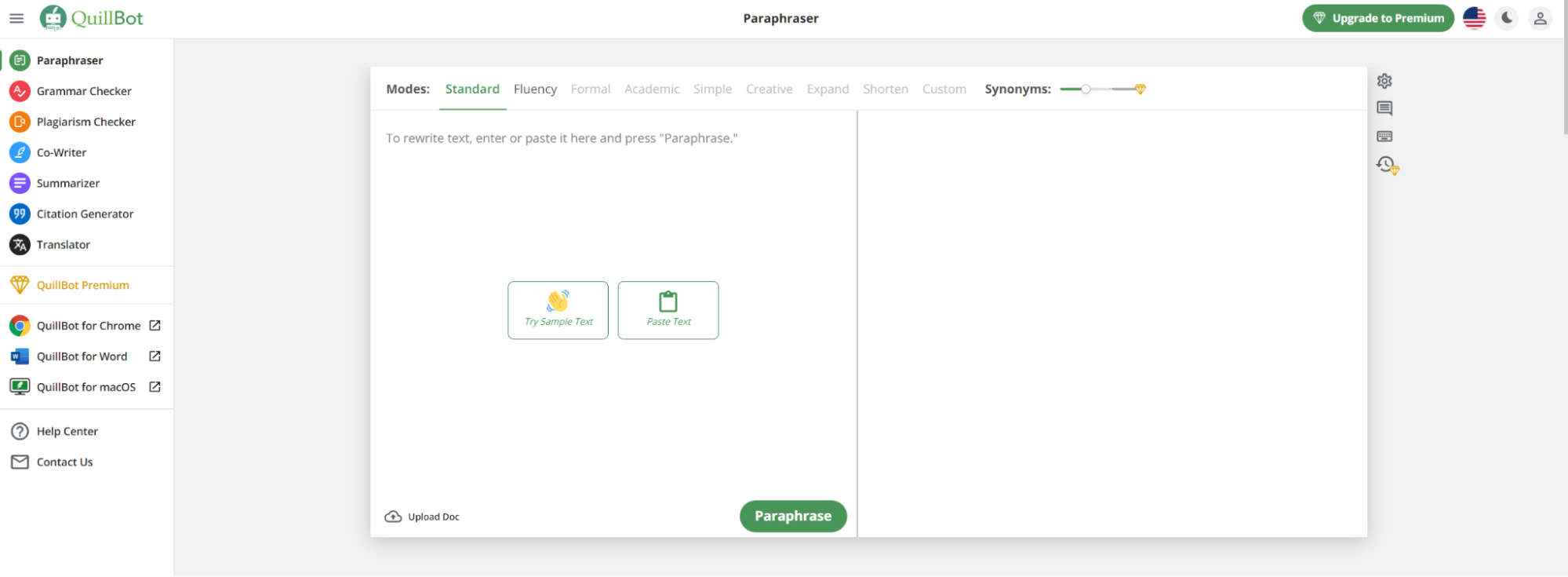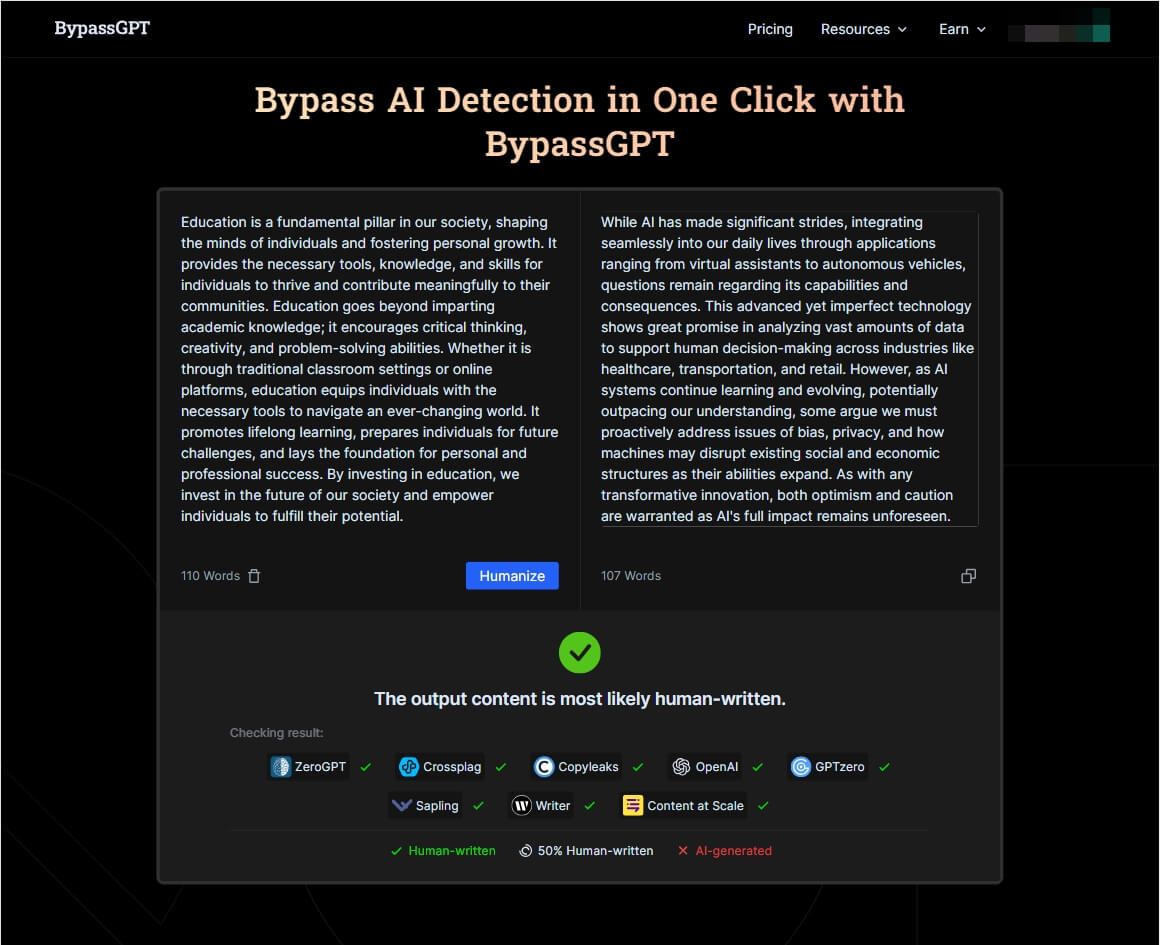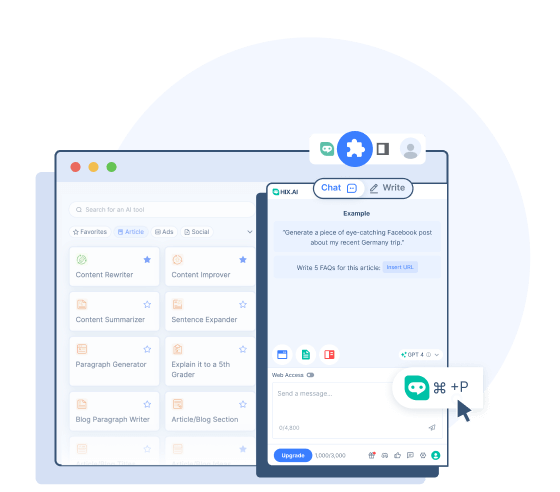We are surrounded by text wherever we go, whether online, in books, text messages, emails, or stores. The text can be anything from stories to opinions, and everything in between. But what happens when you find a text you really like and want to share, but you don’t want to write it exactly as it was said? Enter paraphrasing.
Paraphrasing is a nifty alternative to using quotes, where you copy the exact words and place them in quotation marks. It allows you to rephrase the text in a way that reads more clearly and smoothly while allowing your personal voice to sing through.
But what exactly is paraphrasing and how is it different from quoting or summarizing? Below, we’ll break it all down and include some examples to demonstrate. We’ll also look at the benefits of using a paraphrasing tool when writing. Let’s get into it.
The Definition of Paraphrase
According to the Cambridge Online Dictionary, the definition of paraphrase is to write or say something using different words while maintaining the meaning. Paraphrasing is normally used to make sentences simpler, shorter, or clearer.
When you restate someone else’s ideas, opinions, or thoughts in your own words, you need to cite the source. Even though you’ve paraphrased their words, you’re still using their concepts.
Why Do You Need to Paraphrase?
There are various reasons why you’d want or need to paraphrase text. Below are a few of the most common reasons:
- Avoids plagiarism
- Adds credibility and support for claims
- Helps use source material as evidence that’s easy to read while appropriately referencing
- Demonstrates a thorough understanding of the original text
- Offers an alternative to quoting (directly and indirectly)
- Allow you to maintain your voice throughout the text
Paraphrasing, Quoting, Summarizing: What’s the Difference?
There are a few distinct differences between paraphrasing, quoting, and summarizing. Below, we’ll explore them in-depth.
Paraphrasing vs Quoting
As you know, paraphrasing is taking someone’s words, understanding the meaning, and rewriting the content in your own words. Quoting, on the other hand, is taking someone’s words exactly as they were said or written and placing them in inverted commas to show you are stating what someone said directly, word for word.
In most cases, it’s better to paraphrase than quote because:
- You can maintain your own voice throughout your article, blog, or paper
- Paraphrasing demonstrates your understanding of the original text
- Quotes cause interruptions in fluidity and reduce readability
That said, there are some cases where quoting is the better option, such as:
- When you want an exact definition
- You’re providing evidence to support an argument
- The author’s style or language is useful to your point
- When analyzing or critiquing a claim
Paraphrasing vs Summarizing
As we mentioned, when you paraphrase text, you’re writing the text in your own words. The text will normally be the same length or slightly shorter than the original.
When you take text that is fairly lengthy and reduce it to just the key points so the end result is considerably shorter, it is called summarizing.
Quoting and paraphrasing are used as tools to present information from specific sources. If the information you’re including is more general, such as using one or two points to demonstrate the overarching argument in an article, it’s called summarizing.
How to Paraphrase
Now that you understand how paraphrasing differs from quoting and summarizing, let’s look at how you can paraphrase text.
- Start by reading the text several times. This is to ensure you thoroughly understand the context of the statement and its meaning.
- Write your own version of what you read without looking at the original text.
- Look at your text and the original text side-by-side. If the two are too similar, make changes to your text while maintaining the meaning.
- Check your spelling (especially names), grammar, and punctuation.
- Cite the source of the original text at the end of your paraphrased text.
Quick tips for paraphrasing
- Begin at a different point than the original text.
- Synonyms are your best friend - use them as much as possible when it makes sense.
- Change the sentence structure - switch up active and passive voice, for example.
- Break up longer sentences into shorter ones, or vice versa.
Paraphrasing with AI
If you still have trouble paraphrasing on your own, opt for paraphrasing tools online.
Utilize the Paraphrasing Tool with HIX.AI
When it comes to paraphrasing text efficiently, you can always count on HIX.AI's paraphrasing tool. Whether you need to paraphrase a sentence, a paragraph, or even an entire article, this tool has the answers.
Powered by GPT-3.5 and GPT-4, this paraphrasing tool does more than just simple word substitutions. Instead, it understands the context and essence of the original text and generates paraphrases with the same meaning but different expressions in a human-like way.
It also offers several customization options to tailor the output according to your specific needs. You can adjust the level of creativity, select your target audience and tone of voice, and choose different languages for paraphrasing.
In short, it's a convenient and reliable paraphrasing tool that's worth a try.

Discover Other AI Paraphrasing Tools Online
Besides HIX.AI, there are numerous AI platforms that offer paraphrasing services. For example, QuillBot and Wordtune.
QuillBot

QuillBot is an advanced paraphrasing tool that uses AI to rephrase and restructure sentences, paragraphs, or articles.
It offers various modes such as Standard, Fluency, Creative, and Concise to cater to different writing styles and purposes. QuillBot will also provide multiple alternative rephrased versions, allowing users to choose the one that best fits their needs.
Furthermore, QuillBot offers a browser extension, integrated with platforms like Google Docs to enhance user experience.
Click on to learn more about QuillBot and its alternatives.
Wordtune

Wordtune serves as an AI writing assistant and paraphrasing tool designed to help users improve the quality and clarity of their writing. It provides suggestions for rephrasing sentences, offering alternative word choices, and improving overall readability.
Like HIX.AI and QuillBot, it offers an extension that integrates with platforms like Google Docs to assist users in various writing contexts.
Explore more about Wordtune and its alternatives by clicking here.
HIX Bypass

HIX Bypass is a powerful paraphraser that utilizes sophisticated AI humanization techniques to rewrite AI text and make it human-like enough to bypass any AI detector. Unlike most rewriting tools, it goes beyond simple word replacement by intelligently altering aspects of the text such as the vocabulary, syntax, and tone.
Since it works with any AI language model out there such as ChatGPT, Bard, GPT-4, and Jasper, it can be relied on to deliver a perfect human score. This means consistently bypassing extremely stringent AI detectors like Originality.ai and GPTZero, just to name a few.
In addition, any rewritten content will not only be unique and plagiarism-free but also contextually accurate to the original text. Another added benefit is that HIX Bypass has multilingual support, which lets you rewrite content in over 50+ native languages.
Rewrite Your Text With HIX Bypass To Bypass AI Detection >>>
BypassGPT

If you want to evade AI detectors like GPTZero and Originality.ai, BypassGPT is another reliable rewriter that can help you humanize any AI text in seconds. It is trained to mimic natural human writing styles effectively, making any AI text sound more authentic while retaining the original meaning.
Whether the content was generated using Bard, ChatGPT, GPT-4, or even Jasper, the output will be entirely plagiarism-free and deliver a 100% human result.
BypassGPT also has three different humanization modes and it even caters to SEO optimization, as you can include keywords to ensure the content ranks highly in SERPs. Plus, the rewritten text is made to sound so human that it can evade spam filters every time.
Paraphrase AI Content Using BypassGPT To Make It Sound Human >>>
Benefits of Paraphrasing
There are a few solid benefits to be gained for your learning abilities and writing skills by paraphrasing. These include:
Improved Writing Skills
When you paraphrase text, you need to write paragraphs and passages of text in your own words based on your understanding. This helps you bolster your writing skills, especially when you need to come up with creative synonyms while maintaining the meaning.
Paraphrasing lets you express information or ideas in a short, simple, refreshing way, giving you the opportunity to remove plagiarism while enhancing your writing skills. What better way to build your skills than to express ideas in your own authentic voice.
Increased Comprehension
Put simply, comprehension is the understanding of what has been written and the ability to explain it. As we’ve mentioned, paraphrasing allows you to demonstrate your understanding of the details and concepts in the original text by connecting the points and explaining the meaning.
Paraphrasing is also fantastic to reinforce your reading skills. It assists you by finding supporting details, identifying main concepts, and establishing the author’s voice and keeping true to it. When you rewrite the text in your own words, you need to double-check your comprehension by seeing if the meaning has transferred. This improves your awareness while allowing you to get a better understanding of the text.
Save Energy and Time
Writing content from a blank slate can be challenging and requires a lot of energy and time. You need to do in-depth research, fact-checking, and analysis, which is energy and time-consuming.
A simple solution to this rather painstaking process is to paraphrase the sentence or paragraph that backs up your argument. This allows you to create content without the muss and fuss of research and ideation. It’s a win-win.
Example of a Paraphrase
Let’s look at an example of paraphrasing text correctly.
Original: “It makes such a difference when there is reciprocity, mutual respect, and a whole lot of love and laughter. When you have experienced genuine love, appreciation, and interest on a weekly basis from someone who calls you a friend, they have set the bar pretty high for anyone else who wants to be called a friend” (Johns, 2023)
Paraphrased: It is truly remarkable how reciprocity, mutual respect, and an abundance of love and laughter can truly transform relationships. When you have had the privilege of experiencing authentic love, appreciation, and sincere interest from someone who considers you a friend on a regular basis, they have established a remarkably high standard for those seeking the title of a true friend (Johns, 2023).
You can easily see that the sentences have been moved around, many synonyms have been used, sentence structure has changed, and personality has been included.
Ensure the following:
- Only include information that’s relevant to the point you’re trying to make.
- If the text is scientific, start the paraphrase with the signal text, “Doctors/scientists/researchers say/believe/found that…”
- Retain keywords or phrases that reinforce the meaning.
- Always structure the sentences differently from the original. Write the text based on your understanding and in a way you would say it.
- Present the information in a different order.
How to Cite Paraphrased Text
How you cite paraphrased text will be determined by the citation format required (i.e., MLA, APA, Chicago, etc.). In-text citations will normally be MLA or APA and look like this:
MLA: (Johns 187)
APA: (Johns, 2023, p187)
For Chicago footnotes, you will use this format:
Austin Johns, “Understanding boundaries within friendships and relationships,” Journal of Psychology and Sociology 42, no. 16 (2023): 187. https://journalofpsychology.com
Conclusion
So, what does paraphrasing mean in the grand scheme of things? It means that you can use text that others have written while maintaining your style and voice. Quotes can create stilting in your text while summarizing is only appropriate in certain circumstances.
Using a paraphrasing tool is a quick and simple way to ensure you’re paraphrasing correctly while maintaining the meaning and integrity of the original text. Let’s be honest: no one wants to be sourced for a statement that someone else has incorrectly paraphrased. Always ensure the text you’ve created is true to the original.



